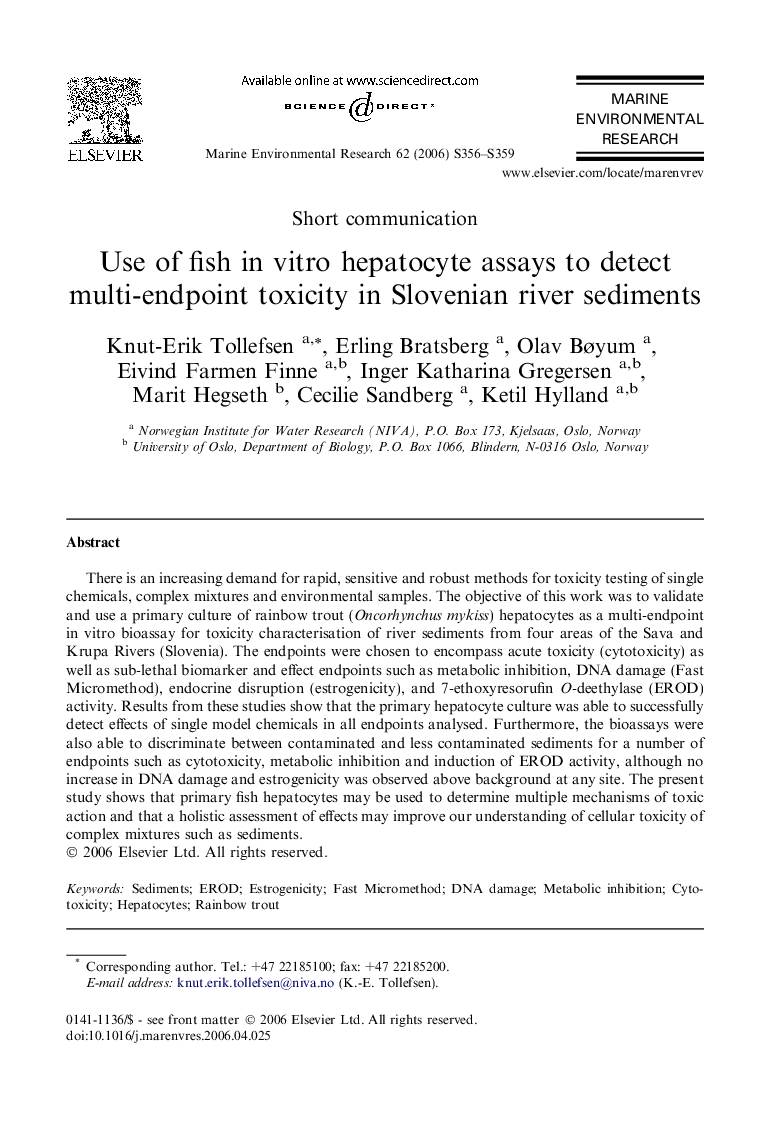| Article ID | Journal | Published Year | Pages | File Type |
|---|---|---|---|---|
| 4551773 | Marine Environmental Research | 2006 | 4 Pages |
Abstract
There is an increasing demand for rapid, sensitive and robust methods for toxicity testing of single chemicals, complex mixtures and environmental samples. The objective of this work was to validate and use a primary culture of rainbow trout (Oncorhynchus mykiss) hepatocytes as a multi-endpoint in vitro bioassay for toxicity characterisation of river sediments from four areas of the Sava and Krupa Rivers (Slovenia). The endpoints were chosen to encompass acute toxicity (cytotoxicity) as well as sub-lethal biomarker and effect endpoints such as metabolic inhibition, DNA damage (Fast Micromethod), endocrine disruption (estrogenicity), and 7-ethoxyresorufin O-deethylase (EROD) activity. Results from these studies show that the primary hepatocyte culture was able to successfully detect effects of single model chemicals in all endpoints analysed. Furthermore, the bioassays were also able to discriminate between contaminated and less contaminated sediments for a number of endpoints such as cytotoxicity, metabolic inhibition and induction of EROD activity, although no increase in DNA damage and estrogenicity was observed above background at any site. The present study shows that primary fish hepatocytes may be used to determine multiple mechanisms of toxic action and that a holistic assessment of effects may improve our understanding of cellular toxicity of complex mixtures such as sediments.
Keywords
Related Topics
Physical Sciences and Engineering
Earth and Planetary Sciences
Oceanography
Authors
Knut-Erik Tollefsen, Erling Bratsberg, Olav Bøyum, Eivind Farmen Finne, Inger Katharina Gregersen, Marit Hegseth, Cecilie Sandberg, Ketil Hylland,
